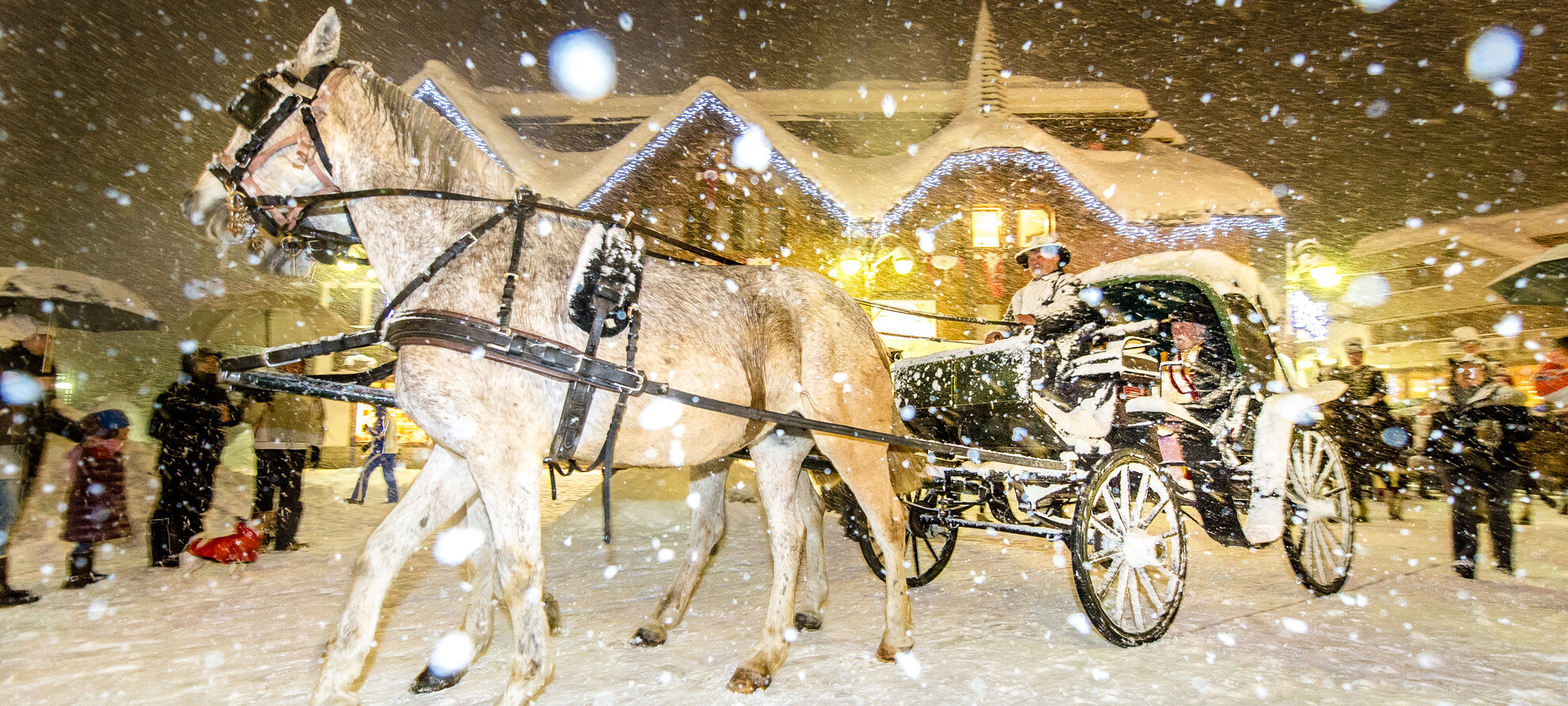Valley Carnival
Fertility celebrations that satisfy the palate
Carnival is a collective propitiatory rite. Without the participation of the whole community, the auspices were ominous. Where in the city masks and dresses flaunted wealth, in the valleys of Trentino, donning everyday clothes, sometimes masked to conceal identities, people laughed and screamed, danced and played, the previous year was burned in the fire as the past, in order to spread ash and promises of fertility on the earth.
At the beginning it lasted only one day, the pagan day of the real peasant New Year, the long-awaited day of food satiety for all, before the arrival of Lent, which would have occupied the rest of the year.

Polenta as a gathering ritual
Harlequin is always hungry but, on Carnival, he becomes the king of the party. On that day, as legend has it, he eats to his content because the food he swallows will quench his hunger for months to come.
In the Trentino valleys the rite of processions, floats, revelries and songs of the months, celebrates no less than three Harlequins around a noisy masquerade of facère or horns, emblem of abundance, or a bonfire that sacrifices Mr. Biagio (the human representation of Carnival) to ward off possible future disasters.
And then each valley distributes to everyone, rich and poor, countless plates of polenta cooked in the square. Because polenta is a community food, you just can’t eat it “alone”. Polenta is doused with jugs of wine, or seasoned with Lucaniche sausages or mortadella meat, distributed in the cold in the snow for the pleasure of warming up with grappa and dancing.
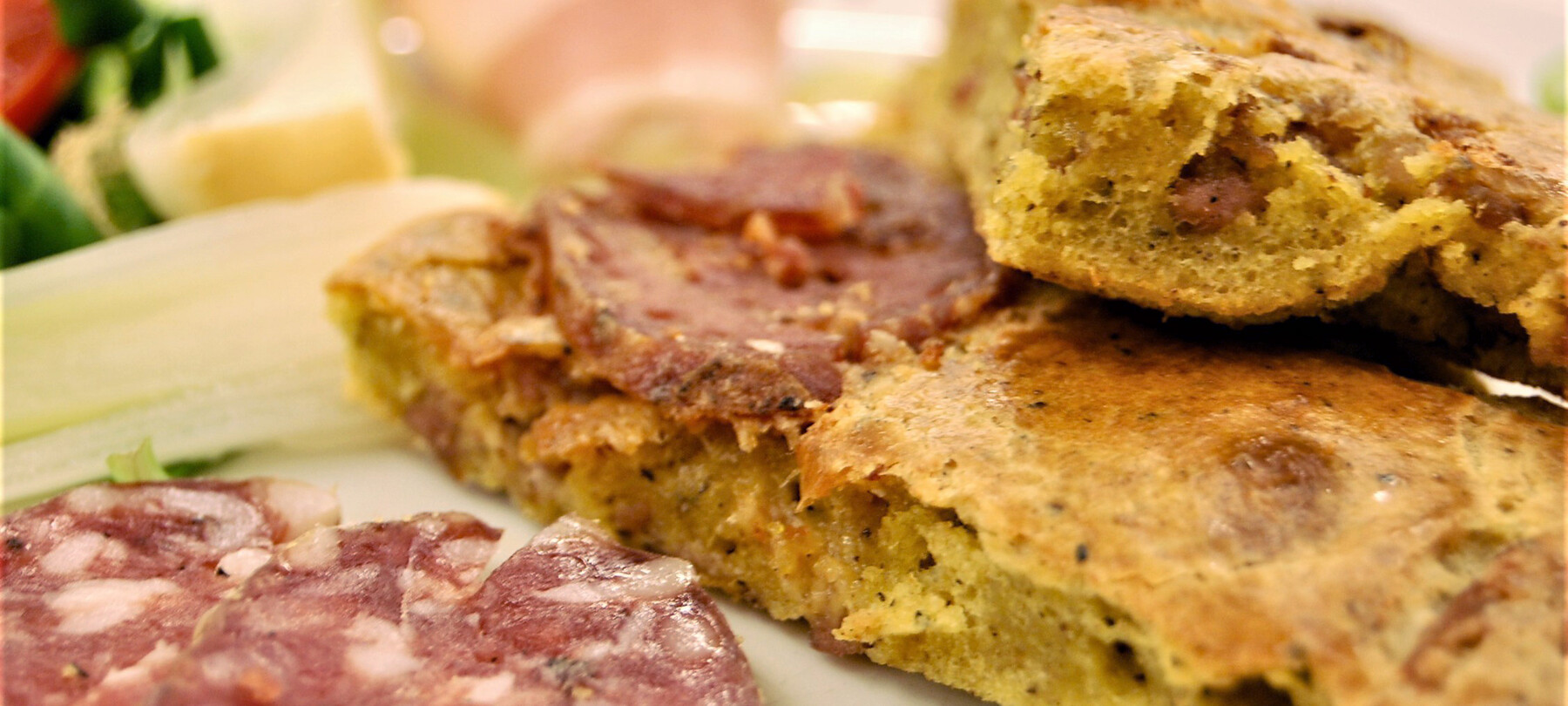
Bigolada and “vender sgnocolà”
A typical tradition of Valsugana is the distribution of pasta in the square. Pasta is topped with butter, cheese and liters of wine. In ancient times, everyone in the village brought their contribution to “fare el pocin” (or, mop up the last of the sauce on one’s plate) and share a tasty meal with everyone.
In the city as in the villages, potato and flour gnocchi, prepared with red meat sauce or with butter and pujina (ricotta-like cheese), are served on the last Friday of Carnival at noon; everyone can go out to get their serving and feel part of their community again.
Onto e bisonto soto tera sconto
Literally “Greasy and hidden under the ashes” where it is cooked, the typical Trentino smacafam kills hunger. White flour, milk, oil, fresh lucanica sausage, smoked pancetta, butter or lard to make a soft focaccia that could make the stomach of those who suffer all year long rejoice to enjoy only one ingredient at a time, when there was, and set any inhibition free.
This is what happened in the Trato marzo rite, when young conscripts, with flowery hat on their head, used to gather on a hill in the village in the middle of the night around a bonfire, and then shouted loudly the names of couples of royal or burlesque fellow villagers, as a way of wishing fertility in the name of continuity of life.
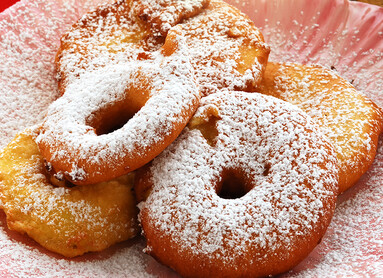
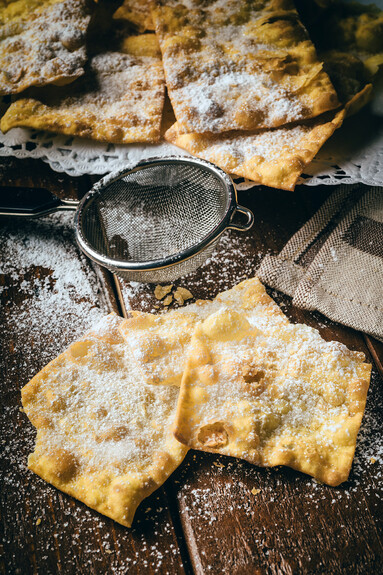



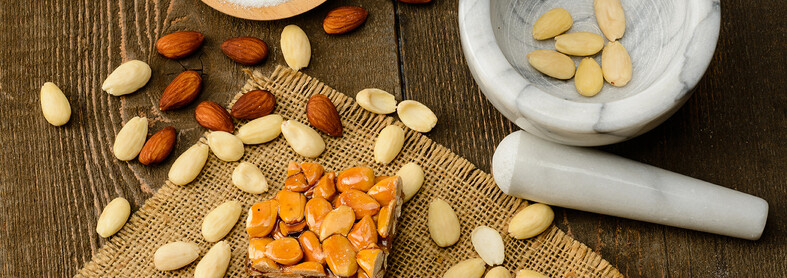
Grostoli (fritters) and more
Nothing like fried food can smell like a party. And if there is also a little sugar around, the one that even a few decades ago children were trying to steal from the cupboards of their homes, euphoria is assured.
The grostoli were fried in the lard of freshly slaughtered pigs, or in butter, before it was sipped, and made with flour paste, eggs and, when possible, dried fruit.
In Val di Fassa, grafon is a donut made from leavened white flour, cut in the shape of a thick rectangle, then fried in butter, and the casunzei, which today are also made in their savoury version, were filled with dried pears. And then crofeni, straboi and fortaie (different versions of local fritters) all paired with jams.
Trentino too, of course, has its grostoli flavoured with peasant grappa, and its pancakes with raisins!
Because at Carnival, every sin of gluttony is worth its while… in order to stock up on smiles and good humour!
